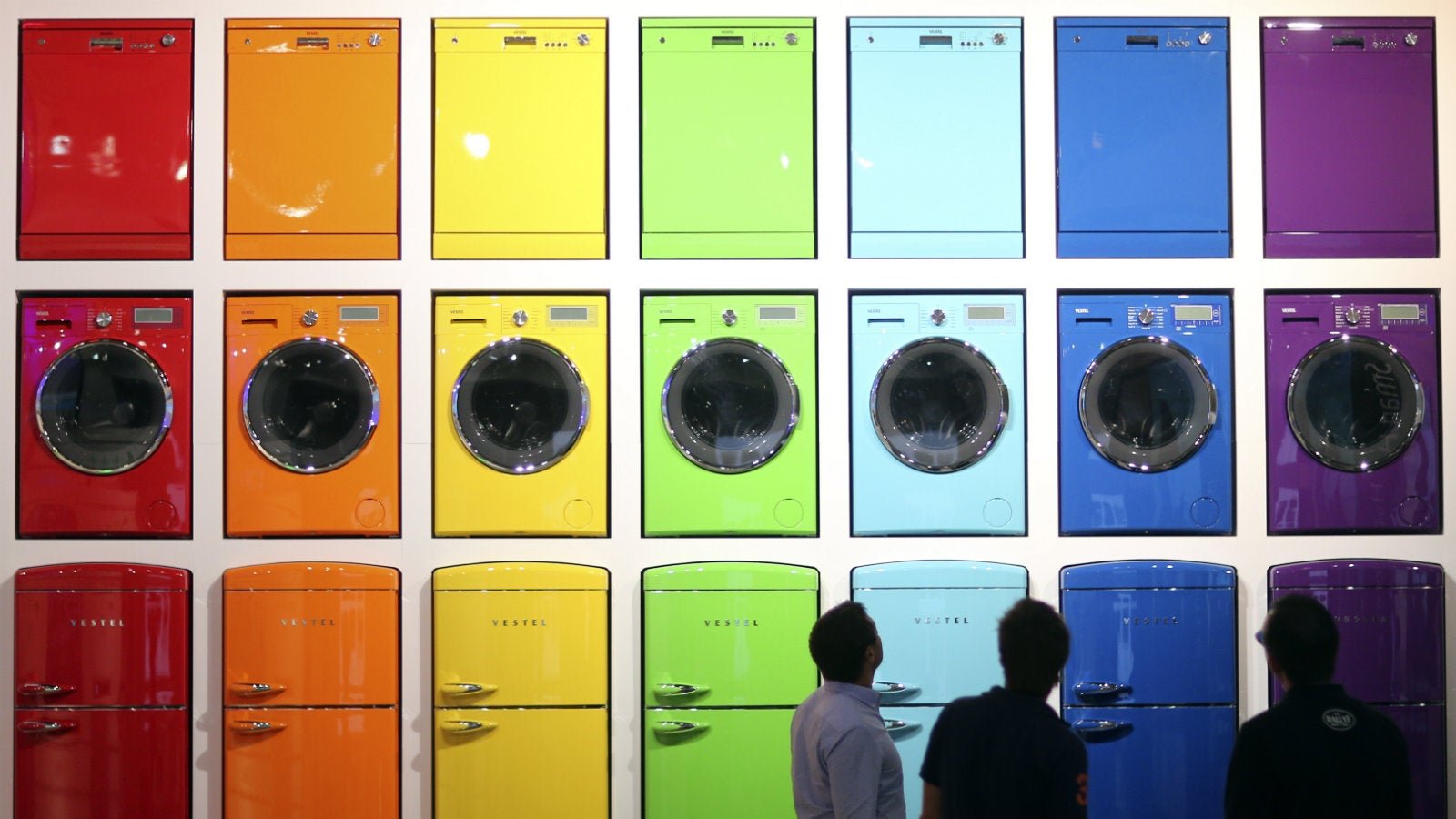Five ways the internet of things is already broken—and how to fix it
There are some 10 billion internet-connected devices in the world today. These include phones, computers, cars, and the assorted grab-bag of devices that fall under the rubric of the “internet of things” (IoT). By 2050, there will be over 100 billion internet-connected devices. The vast majority of those will be “things”: lightbulbs, doorknobs, coffee machines, and, yes, fridges.


There are some 10 billion internet-connected devices in the world today. These include phones, computers, cars, and the assorted grab-bag of devices that fall under the rubric of the “internet of things” (IoT). By 2050, there will be over 100 billion internet-connected devices. The vast majority of those will be “things”: lightbulbs, doorknobs, coffee machines, and, yes, fridges.
But there are some big obstacles before the internet of things can become a viable business. A recent research paper from IBM lays out the top five:
1) Cost
If IoT devices are to sell at scale, they need to be cheap enough to replace the “dumb” devices they’re replacing, whether those are lightbulbs or keychains. If they are cheap, the businesses that make them need sources of revenue beyond the product itself. And customers will want service and maintenance. But “the cost of supporting and serving billions of smart devices will be substantial—even something as simple as maintaining centralized servers that distribute regular software updates,” write the authors of IBM’s paper.
2) Trust
Trust in the internet has taken a beating over the past year with revelations of mass spying and increasing awareness of corporate surveillance for advertising purposes. It will take some convincing for people to trust that the connected devices in their homes, cars, and on their person will not be open to similar abuse.
3) Longevity
Computers are replaced every few years. Smartphones every 24 months. Doorknobs tend to stay in service in decades. IoT companies need to figure out how to convince potential customers that their devices will last—or that they will be updated at regular intervals without substantial cost.
4) Utility
What is the point of a connected device? “A smart, connected toaster is of no value unless it produces better toast,” write the paper’s authors. Connected devices must offer more than just connectivity.
5) Making money
“We’ve been working with clients who make smart homes, IoT networks, and they’re struggling with a twofold problem,” says Paul Brody, IBM’s vice-president of mobile and internet of things, and one of the paper’s authors. “They are almost uniformly finding that they’re getting less revenue than they hoped. They had built business plans on unrealistic assumption that’s I’m going to get user revenue, sell user data, and going to have ads. But didn’t realize how much its going to cost and how many years devices are going to be in service.” There is, after all, only so much valuable information to be gleaned from a smart kettle.
The future
So what is to be done? Brody has a wild idea: He suggests looking to the infrastructure of Bitcoin; more specifically, to the Blockchain, the open ledger that the Bitcoin system uses to ensure accountability while remaining anonymous and decentralized. The paper suggests that using a Blockchain-like mechanism to coordinate IoT devices would allow the devices to use each others’ spare processing power (thus reducing the need for expensive centralized servers), verify each other through consensus, and reduce the risk of failure thanks to its decentralized nature.
This would, Brody admits, necessitate a “quiet period” and for companies to “go back to the drawing board.” Brody predicts that it is only in 2016 or 2017 that we will see a flood of new devices that actually add value, and in sustainable ways. That matches up with a recent Gartner prediction that hype around the internet of things had peaked. Still, rethinking the architecture of the internet of things seems a pretty wild idea. Brody says IBM is working on a proof of concept with Samsung, which it will show early next year, but he doesn’t disagree: “It is both a ridiculously impractical and undesirable,” he says. “And also very feasible.”